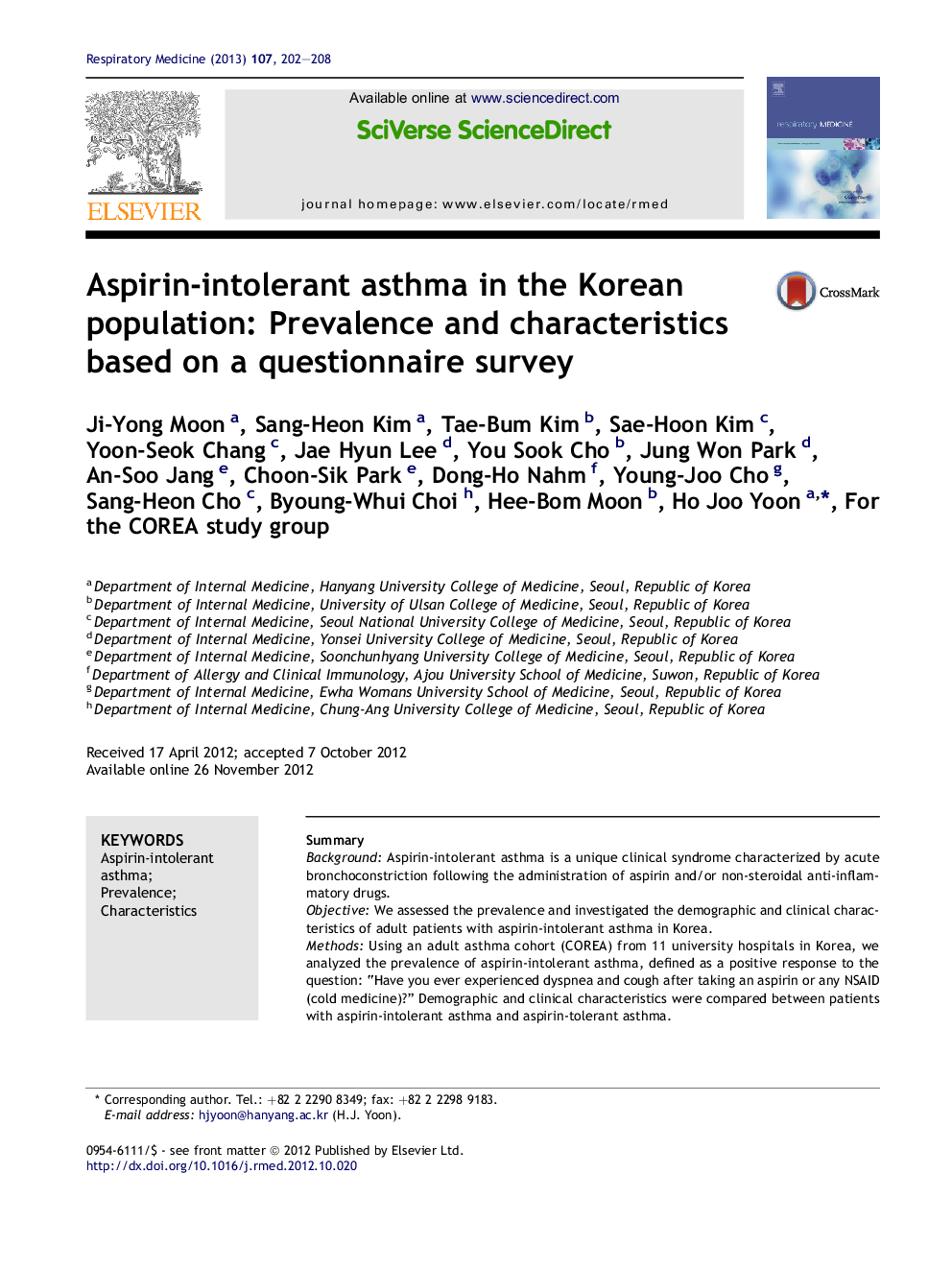| کد مقاله | کد نشریه | سال انتشار | مقاله انگلیسی | نسخه تمام متن |
|---|---|---|---|---|
| 4210681 | 1280605 | 2013 | 7 صفحه PDF | دانلود رایگان |

SummaryBackgroundAspirin-intolerant asthma is a unique clinical syndrome characterized by acute bronchoconstriction following the administration of aspirin and/or non-steroidal anti-inflammatory drugs.ObjectiveWe assessed the prevalence and investigated the demographic and clinical characteristics of adult patients with aspirin-intolerant asthma in Korea.MethodsUsing an adult asthma cohort (COREA) from 11 university hospitals in Korea, we analyzed the prevalence of aspirin-intolerant asthma, defined as a positive response to the question: “Have you ever experienced dyspnea and cough after taking an aspirin or any NSAID (cold medicine)?” Demographic and clinical characteristics were compared between patients with aspirin-intolerant asthma and aspirin-tolerant asthma.ResultsAspirin-intolerant asthma was reported in 68 (5.8%) of 1173 adult asthmatics (age 15–84). Patients with aspirin-intolerant asthma had a lower mean age (43.9 ± 13.4 vs. 49.0 ± 15.6, P = 0.003) and a higher prevalence of rhinosinusitis (77.9% vs. 61.7%, P = 0.012) and atopic dermatitis (16.2% vs. 5.7%, P = 0.001) than aspirin-tolerant asthma patients. There were no significant differences in lung function, asthma severity or the use of asthma controllers. However, aspirin-intolerant asthma was associated with greater use of healthcare services over a lifetime and over the past 12 months. Aspirin-intolerant asthma was significantly associated with emergency room visits over the past 12 months (P = 0.029, OR 2.19, 95% CI 1.08–4.42).ConclusionBased on histories, the prevalence of aspirin-intolerant asthma is 5.8% among adult asthma patients in Korea. Aspirin-intolerant asthma is associated with lower age, higher prevalence of rhinosinusitis and atopic dermatitis, and more frequent exacerbations.
Journal: Respiratory Medicine - Volume 107, Issue 2, February 2013, Pages 202–208